Swastika Roy
XAI-Driven Client Selection for Federated Learning in Scalable 6G Network Slicing
Mar 16, 2025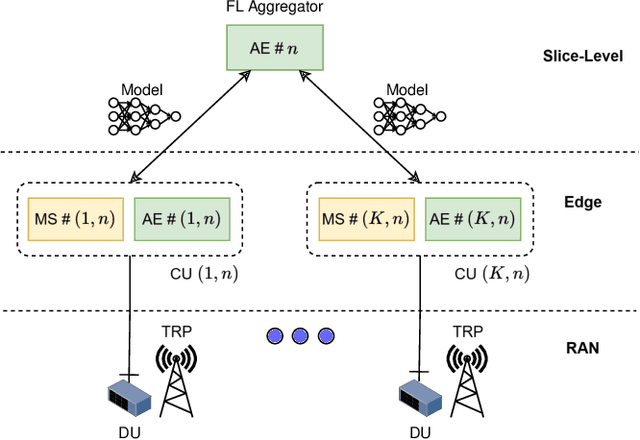

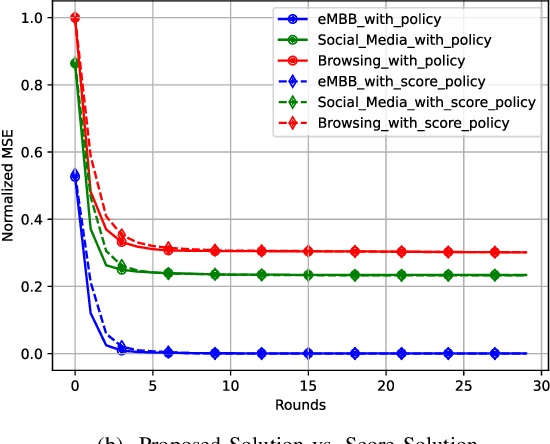
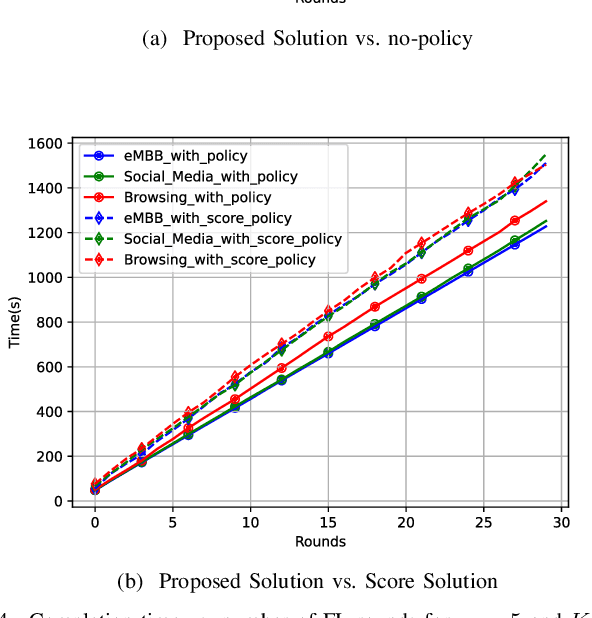
Abstract:In recent years, network slicing has embraced artificial intelligence (AI) models to manage the growing complexity of communication networks. In such a situation, AI-driven zero-touch network automation should present a high degree of flexibility and viability, especially when deployed in live production networks. However, centralized controllers suffer from high data communication overhead due to the vast amount of user data, and most network slices are reluctant to share private data. In federated learning systems, selecting trustworthy clients to participate in training is critical for ensuring system performance and reliability. The present paper proposes a new approach to client selection by leveraging an XAI method to guarantee scalable and fast operation of federated learning based analytic engines that implement slice-level resource provisioning at the RAN-Edge in a non-IID scenario. Attributions from XAI are used to guide the selection of devices participating in training. This approach enhances network trustworthiness for users and addresses the black-box nature of neural network models. The simulations conducted outperformed the standard approach in terms of both convergence time and computational cost, while also demonstrating high scalability.
Towards Bridging the FL Performance-Explainability Trade-Off: A Trustworthy 6G RAN Slicing Use-Case
Jul 24, 2023



Abstract:In the context of sixth-generation (6G) networks, where diverse network slices coexist, the adoption of AI-driven zero-touch management and orchestration (MANO) becomes crucial. However, ensuring the trustworthiness of AI black-boxes in real deployments is challenging. Explainable AI (XAI) tools can play a vital role in establishing transparency among the stakeholders in the slicing ecosystem. But there is a trade-off between AI performance and explainability, posing a dilemma for trustworthy 6G network slicing because the stakeholders require both highly performing AI models for efficient resource allocation and explainable decision-making to ensure fairness, accountability, and compliance. To balance this trade off and inspired by the closed loop automation and XAI methodologies, this paper presents a novel explanation-guided in-hoc federated learning (FL) approach where a constrained resource allocation model and an explainer exchange -- in a closed loop (CL) fashion -- soft attributions of the features as well as inference predictions to achieve a transparent 6G network slicing resource management in a RAN-Edge setup under non-independent identically distributed (non-IID) datasets. In particular, we quantitatively validate the faithfulness of the explanations via the so-called attribution-based confidence metric that is included as a constraint to guide the overall training process in the run-time FL optimization task. In this respect, Integrated-Gradient (IG) as well as Input $\times$ Gradient and SHAP are used to generate the attributions for our proposed in-hoc scheme, wherefore simulation results under different methods confirm its success in tackling the performance-explainability trade-off and its superiority over the unconstrained Integrated-Gradient post-hoc FL baseline.
Explanation-Guided Fair Federated Learning for Transparent 6G RAN Slicing
Jul 18, 2023Abstract:Future zero-touch artificial intelligence (AI)-driven 6G network automation requires building trust in the AI black boxes via explainable artificial intelligence (XAI), where it is expected that AI faithfulness would be a quantifiable service-level agreement (SLA) metric along with telecommunications key performance indicators (KPIs). This entails exploiting the XAI outputs to generate transparent and unbiased deep neural networks (DNNs). Motivated by closed-loop (CL) automation and explanation-guided learning (EGL), we design an explanation-guided federated learning (EGFL) scheme to ensure trustworthy predictions by exploiting the model explanation emanating from XAI strategies during the training run time via Jensen-Shannon (JS) divergence. Specifically, we predict per-slice RAN dropped traffic probability to exemplify the proposed concept while respecting fairness goals formulated in terms of the recall metric which is included as a constraint in the optimization task. Finally, the comprehensiveness score is adopted to measure and validate the faithfulness of the explanations quantitatively. Simulation results show that the proposed EGFL-JS scheme has achieved more than $50\%$ increase in terms of comprehensiveness compared to different baselines from the literature, especially the variant EGFL-KL that is based on the Kullback-Leibler Divergence. It has also improved the recall score with more than $25\%$ relatively to unconstrained-EGFL.
TEFL: Turbo Explainable Federated Learning for 6G Trustworthy Zero-Touch Network Slicing
Oct 18, 2022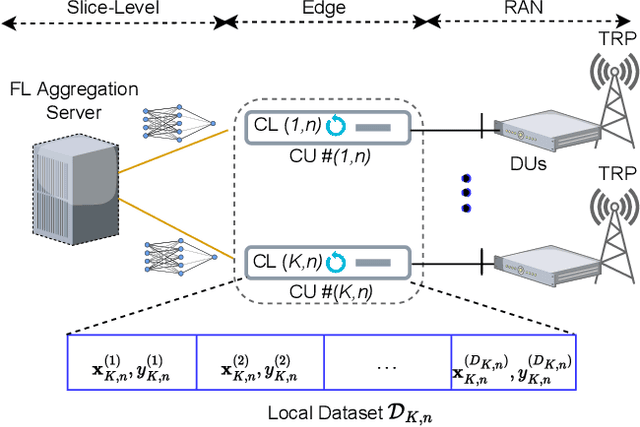
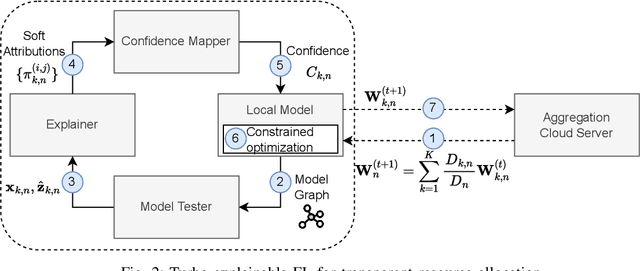
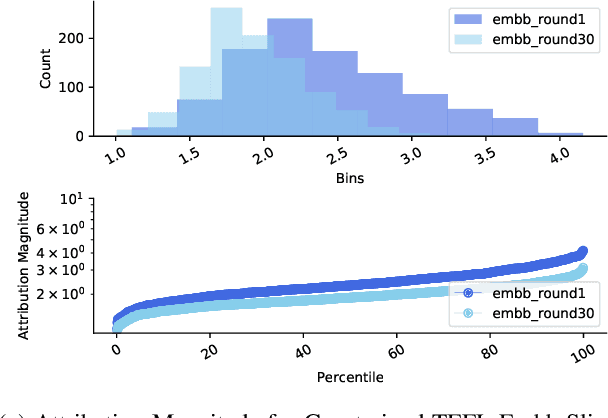
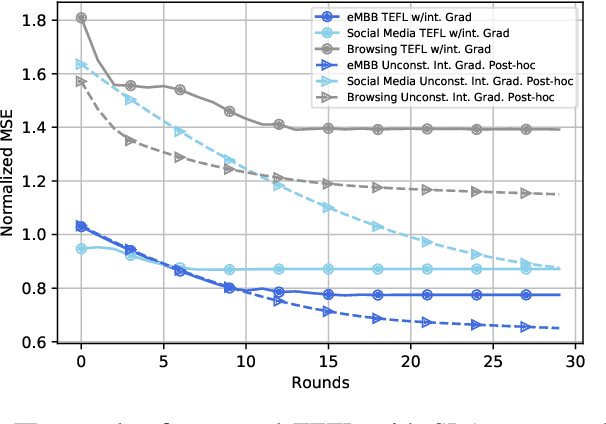
Abstract:Sixth-generation (6G) networks anticipate intelligently supporting a massive number of coexisting and heterogeneous slices associated with various vertical use cases. Such a context urges the adoption of artificial intelligence (AI)-driven zero-touch management and orchestration (MANO) of the end-to-end (E2E) slices under stringent service level agreements (SLAs). Specifically, the trustworthiness of the AI black-boxes in real deployment can be achieved by explainable AI (XAI) tools to build transparency between the interacting actors in the slicing ecosystem, such as tenants, infrastructure providers and operators. Inspired by the turbo principle, this paper presents a novel iterative explainable federated learning (FL) approach where a constrained resource allocation model and an \emph{explainer} exchange -- in a closed loop (CL) fashion -- soft attributions of the features as well as inference predictions to achieve a transparent and SLA-aware zero-touch service management (ZSM) of 6G network slices at RAN-Edge setup under non-independent identically distributed (non-IID) datasets. In particular, we quantitatively validate the faithfulness of the explanations via the so-called attribution-based \emph{confidence metric} that is included as a constraint in the run-time FL optimization task. In this respect, Integrated-Gradient (IG) as well as Input $\times$ Gradient and SHAP are used to generate the attributions for the turbo explainable FL (TEFL), wherefore simulation results under different methods confirm its superiority over an unconstrained Integrated-Gradient \emph{post-hoc} FL baseline.
 Add to Chrome
Add to Chrome Add to Firefox
Add to Firefox Add to Edge
Add to Edge